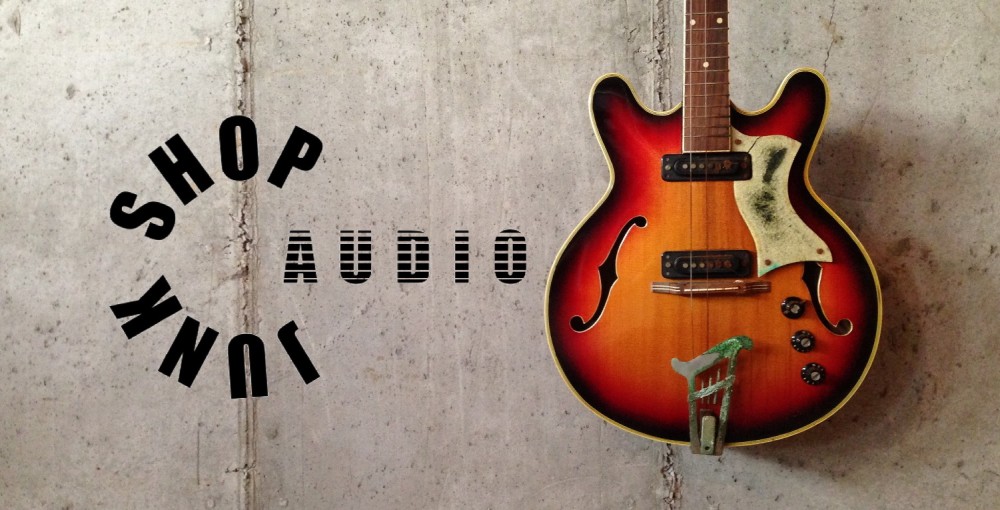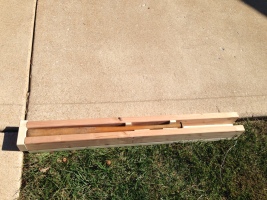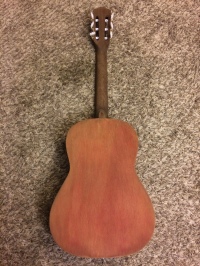






A friend of mine has a daughter named Poppy who is nearly three years old. I had not yet made a cigar box uke, but since the holidays were approaching and I had found this very cool keepsake box with her name on it, I thought it would be a great opportunity to give it a go.
Box


It started out as an attractive box. The name and image were actually printed on a 4.25″x4.25″ piece of tile, which was then inserted into the beautifully stained hardwood exterior. The interior was velvet-lined and it had spring-loaded hinges that kept it open and snapped it shut.
I kept the tile and hinges as is, but sanded off the finish and tore out the interior lining. I cut a slot for the neck, which didn’t turn out to be as difficult as it seemed it would be.
Neck, Head and Finish

The structure is really a stick-through design, so the piece of 1×2 maple runs the length of the instrument. I laid out the scale, which I based on my banjolele project—thirteen inches from bridge to nut.
Once I found the location of the nut, I knew where the tuners and headstock design would be carved. I cut down the neck to size, carved the tuner slot based on my template and then carved the Double Blade design into the headstock.
Pickup, Output Jack and Strap Button



I planned to install a JSA Electromagnetic Cigar Box Guitar Pickup, so I found the closest point to the neck pickup position and drilled a 1″ oval close to the pickup’s size. I trimmed the pickup a bit to make it fit easier.
I installed a strap button made from a brass knurling nut and a stainless steel security screw, which also serves to secure the neck to the box.
The output was installed in the upper corner instead of the lower corner to make it easier to play. Both units were wired together and a ground wire was added to reduce hum, when attached to one of the strings.
Fretboard, Nut and Bridge



The fretboard is an oak 1/4″x2″. It was cut to length, finished, glued, set in place and clamped. Later, I filed small notches in the top of the fretboard to mark the frets.
The nut was cut from a piece of 3/8″ rebar and then ground flat on the bottom and side to set flush against the neck and fretboard. The bridge is made from a length of 1/8″ brass bar. Each of their heights and positions created a level string action.
Strings, Tuners, Strap and Brand




The tuners are standard China machines that look cooler than they perform, but they do the job and keep their tune regardless of the slack in the gears. I orientated them similar to a lap steel, because it’s not something that I have seen on such a small instrument.
The string holes were drilled just behind the brass bridge, at an angle, into the neck. After running the strings through the holes to tuners, I cut a small piece of leather to cover the the holes, which was glued across the bottom and has two small, brass screws at the top.
The strap is made entirely from duct tape—rainbow pattern for the length of the strap and gold for the ends. The headstock strap tie is made from a scrap piece of leather.
Branded Initials and Custom Slide


This is the first use of my newer branding iron with my initials. I already had one with my Junk Shop Audio logo, but I thought it would be cool to add my sign as well.
Since this instrument would potentially be played by small hands, I made a 40mm stubby slide that has a US ring size 4.
Final Notes
All in all it was a fun build and turned out petty cool. Used acoustically, the box is only held together by the spring-loaded hinges, so there is a slight rumble from the top and bottom of the box vibrating against each other, which offers an excellent resonating sound.
Video:
Thanks,
![]()














































































































































































